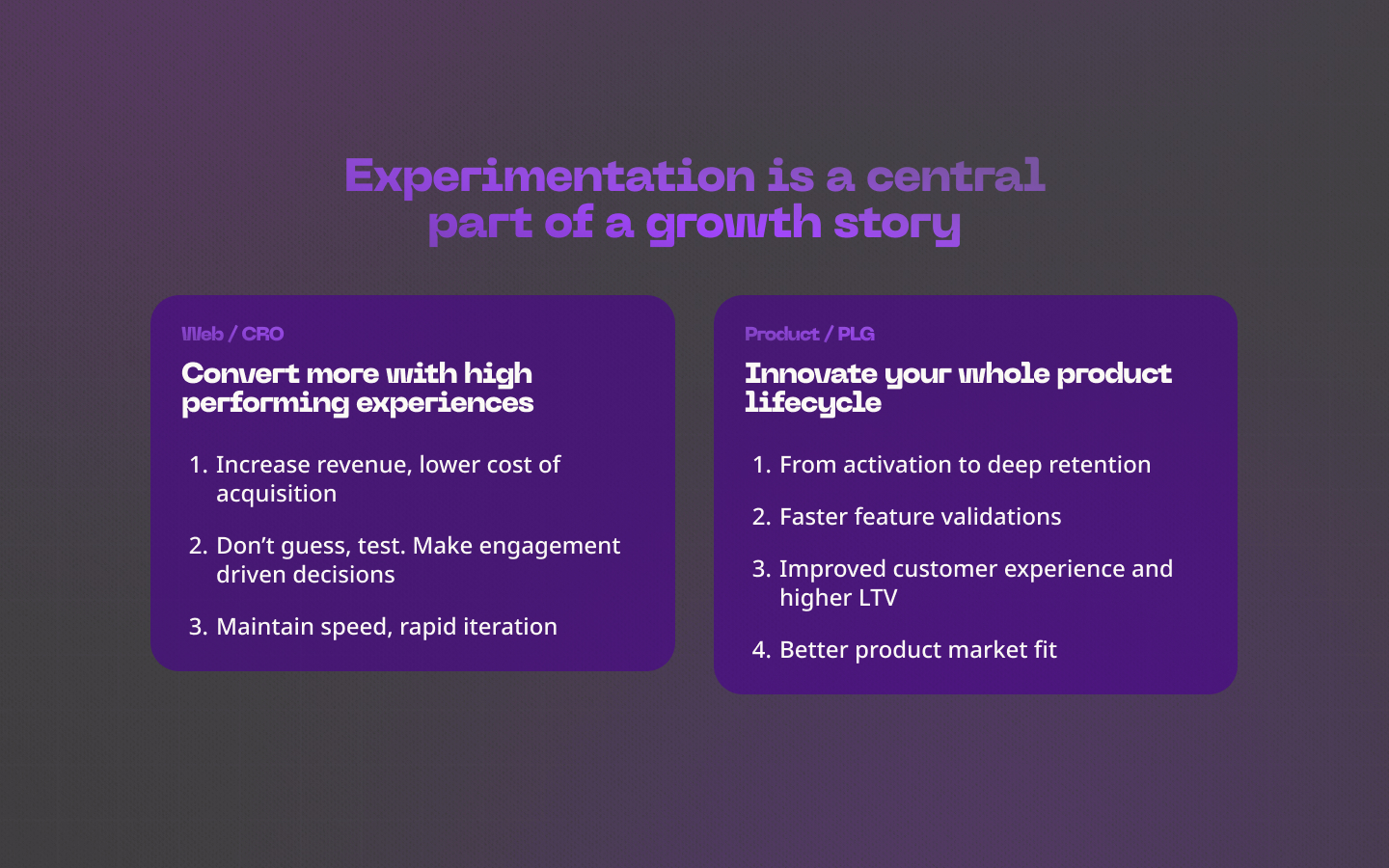Experimentation – The Heart of Growth Strategy
Published at Jun 20, 2024

Experimentation is at the heart of any robust growth strategy. Whether you’re focusing on improving web conversions or innovating throughout the product lifecycle, the iterative process of testing and learning can drive significant results.
Convert More with High-Performing Web Experiences
For web and CRO (Conversion Rate Optimization) teams, the goal is clear: increase revenue while lowering the cost of acquisition. Achieving this requires a disciplined approach to experimentation. Here are the key steps:
Increase Revenue, Lower Cost of Acquisition: By continuously testing and optimizing, businesses can identify which web experiences drive the highest conversions, leading to increased revenue without proportionally increasing costs. Each test provides data that can refine customer acquisition strategies to be more cost-effective.
Data-Driven Decisions: Guesswork is the enemy of efficiency. A/B testing allows teams to make decisions based on actual user engagement rather than assumptions. This data-driven approach ensures that resources are allocated to strategies that have proven their effectiveness.
Speed and Iteration: In a rapidly changing digital landscape, the ability to quickly implement and iterate on tests is crucial. Faster iteration cycles mean quicker insights and the ability to adapt swiftly to new information, maintaining a competitive edge.
Innovate Your Whole Product Lifecycle
On the product side, particularly in Product-Led Growth (PLG) strategies, experimentation spans the entire lifecycle of the product. Here’s how it can transform your approach:
From Activation to Deep Retention: By experimenting with different onboarding flows, feature releases, and user engagement strategies, product teams can identify the best ways to activate users and keep them engaged long-term.
Faster Feature Validations: Before committing extensive resources to new features, experiments can validate their potential impact. This reduces the risk of investing in features that don’t resonate with users and accelerates the development of those that do.
Improved Customer Experience and Higher LTV: Continuous testing helps refine the product experience, directly improving customer satisfaction and lifetime value (LTV). As each successful experiment enhances the user experience, it contributes to a more loyal and valuable customer base.
Better Product Market Fit: Experimentation helps in fine-tuning the product to better meet market demands. By systematically testing different aspects of the product, teams can ensure they are developing features and experiences that align closely with user needs and preferences.
By embedding experimentation into the core of your growth strategy, you not only improve conversion rates and product engagement but also foster a culture of continuous improvement and learning. This dynamic approach is essential for staying competitive and achieving sustainable growth in today’s fast-paced digital environment.